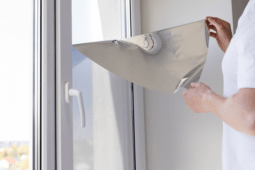Plain Sawn vs Quarter Sawn vs Rift Sawn Wood – Differences and Benefits
When it comes to woodworking and choosing the right type of sawn wood for your project, understanding the differences between plain-sawn, quarter-sawn, and rift-sawn wood is essential. Each type of cut impacts not just the wood’s appearance but also its properties and how it can be used effectively in your projects. Whether you’re a seasoned carpenter or a DIY enthusiast, having a clear insight into these sawing techniques can elevate the quality of your work.
Embark on a journey of craftsmanship and creativity! Explore TedsWoodworking, your gateway to 16,000+ woodworking projects. Let’s turn your woodworking dreams into reality together.
Understanding the Basics of Plain Sawn Wood
Plain-sawn wood, also commonly referred to as flat-sawn wood, is the most prevalent and, generally, the most economical type of lumber you can buy. This method involves slicing through the log, which results in a fast yield of boards with varied, aesthetically pleasing grain patterns.
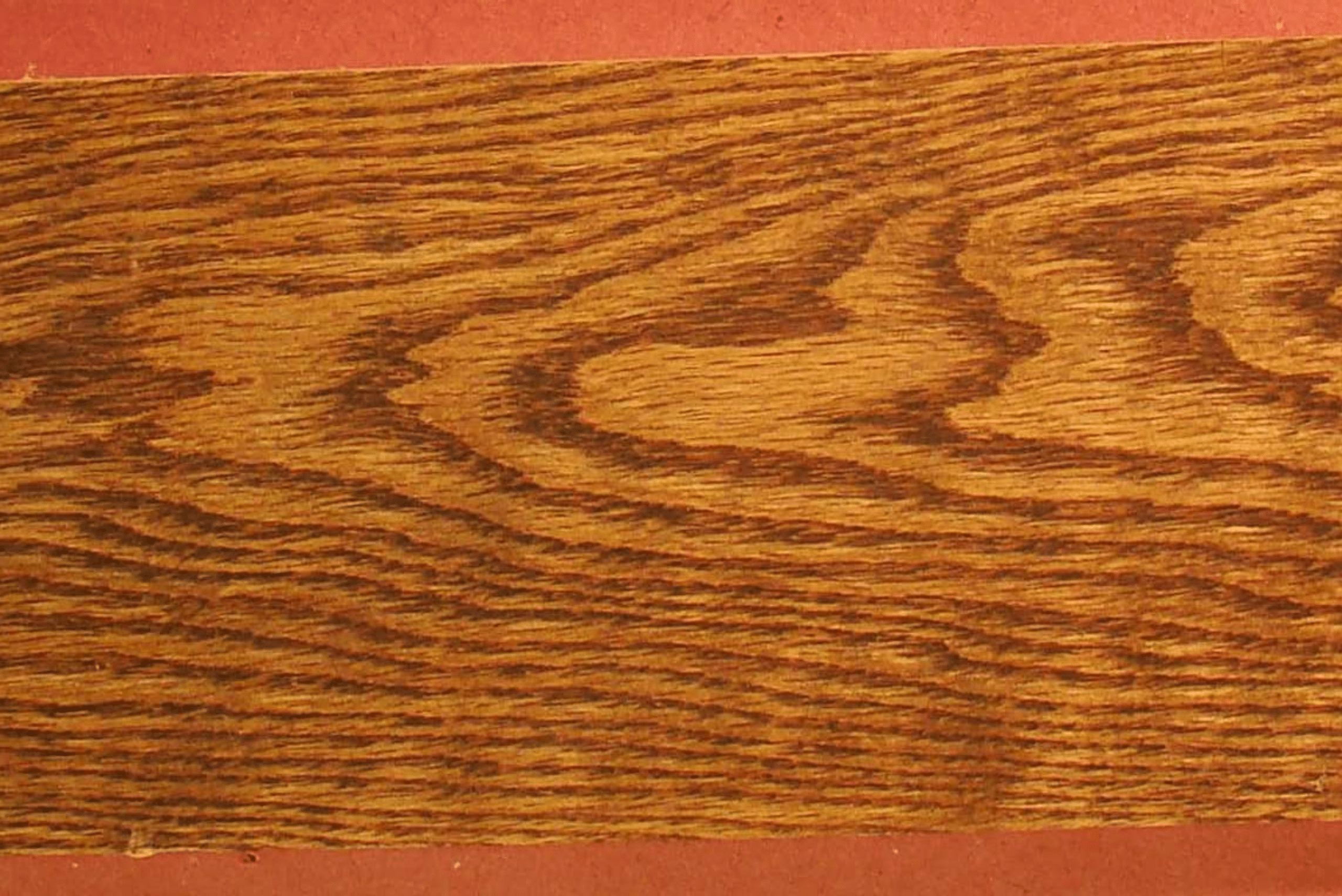
However, plain-sawn wood tends to have more tendencies towards warping and cupping compared to other cuts due to the way the growth rings are aligned. For projects where large, attractive panels are desired, and some wood movement can be tolerated, plain-sawn wood is often a suitable choice.
The Unique Benefits of Quarter Sawn Wood
Quarter-sawn wood is cut at a right angle to the growth rings, resulting in a more uniform and linear grain pattern. This technique not only enhances the wood’s resistance to moisture-induced warping but also brings out the beautiful ray-fleck patterns in species like oak.
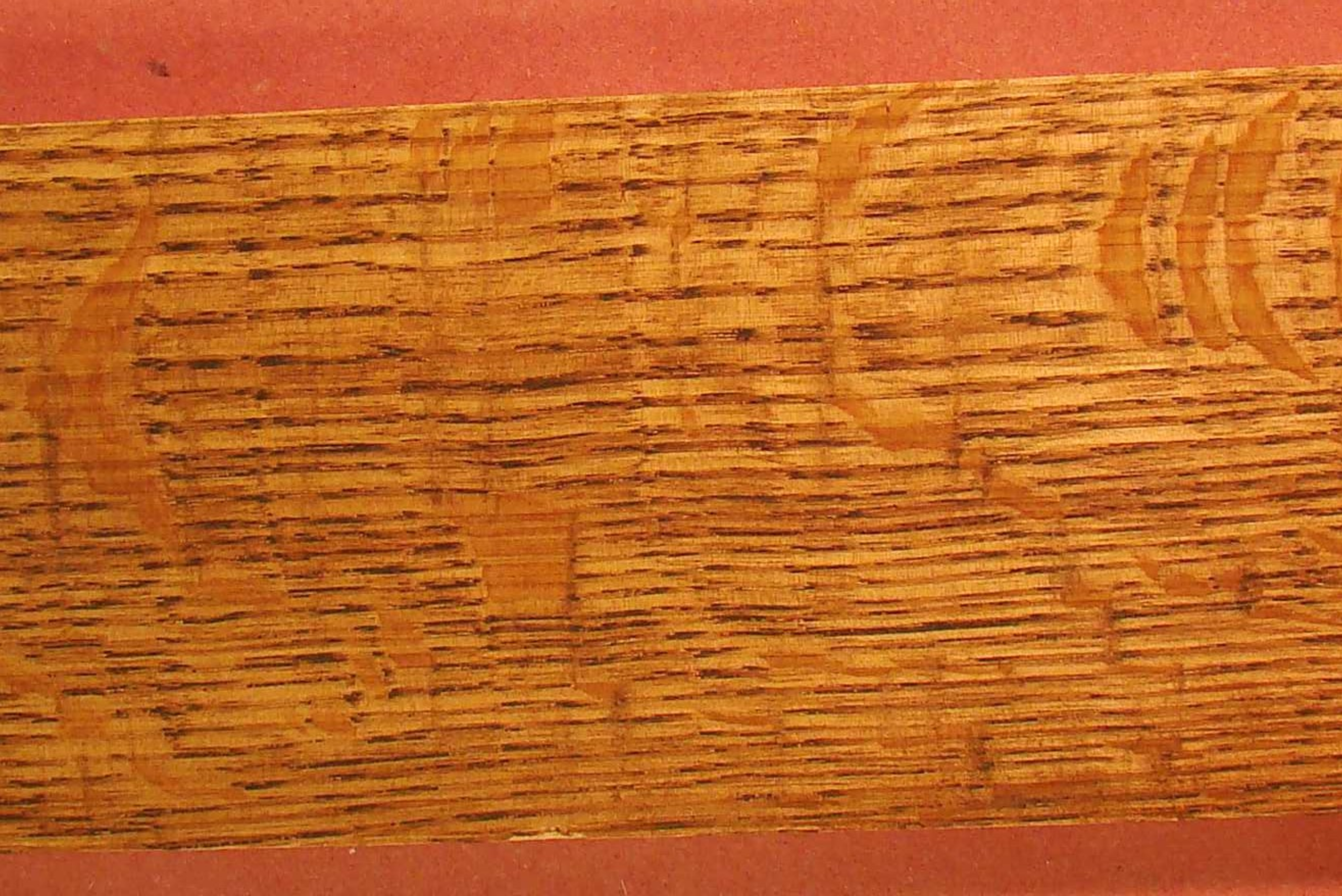
The enhanced stability and distinctive appearance make quarter-sawn wood a favorite for fine furniture, flooring, and musical instruments. It’s a superb option for pieces where longevity and minimal warping are critical.
Why Choose Rift Sawn Wood
Rift-sawn lumber offers the most consistent grain orientation and the least amount of visual disruptions. The cutting method, which involves milling perpendicular to the log’s growth rings but at a slightly different angle than quarter sawing, minimizes wastage compared to quarter-sawn wood but is more labor-intensive and, thus, often more expensive.
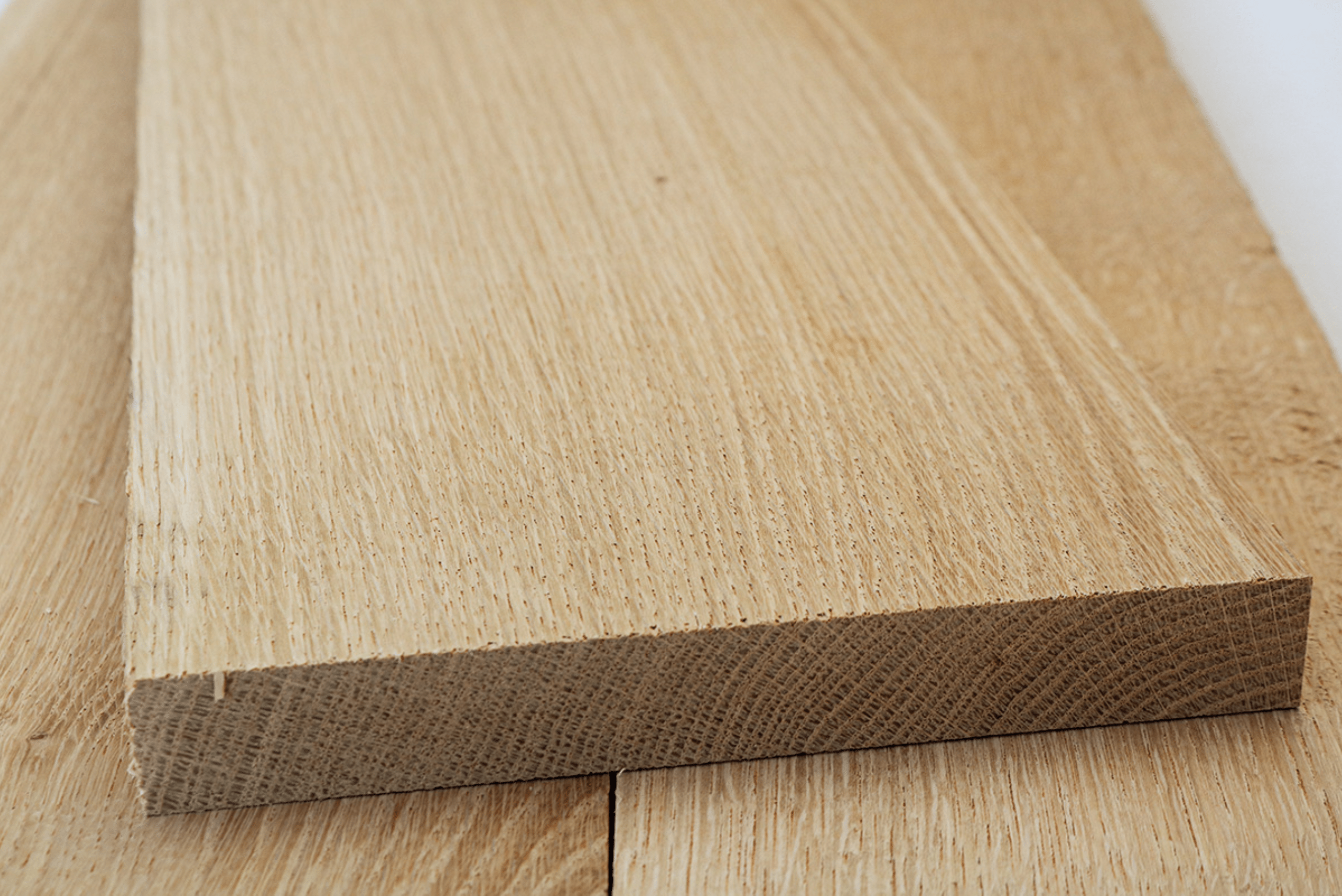
This type of wood is ideal for projects where a sleek, uniform appearance is paramount, such as in cabinetry or high-end custom furniture.
Making the Right Choice for Your Project by Comparing Costs and Applications
Cost is a significant factor when selecting the type of sawn wood. Plain-sawn wood is generally less expensive due to its efficient cutting process, making it accessible for larger projects or when budget constraints are tighter.
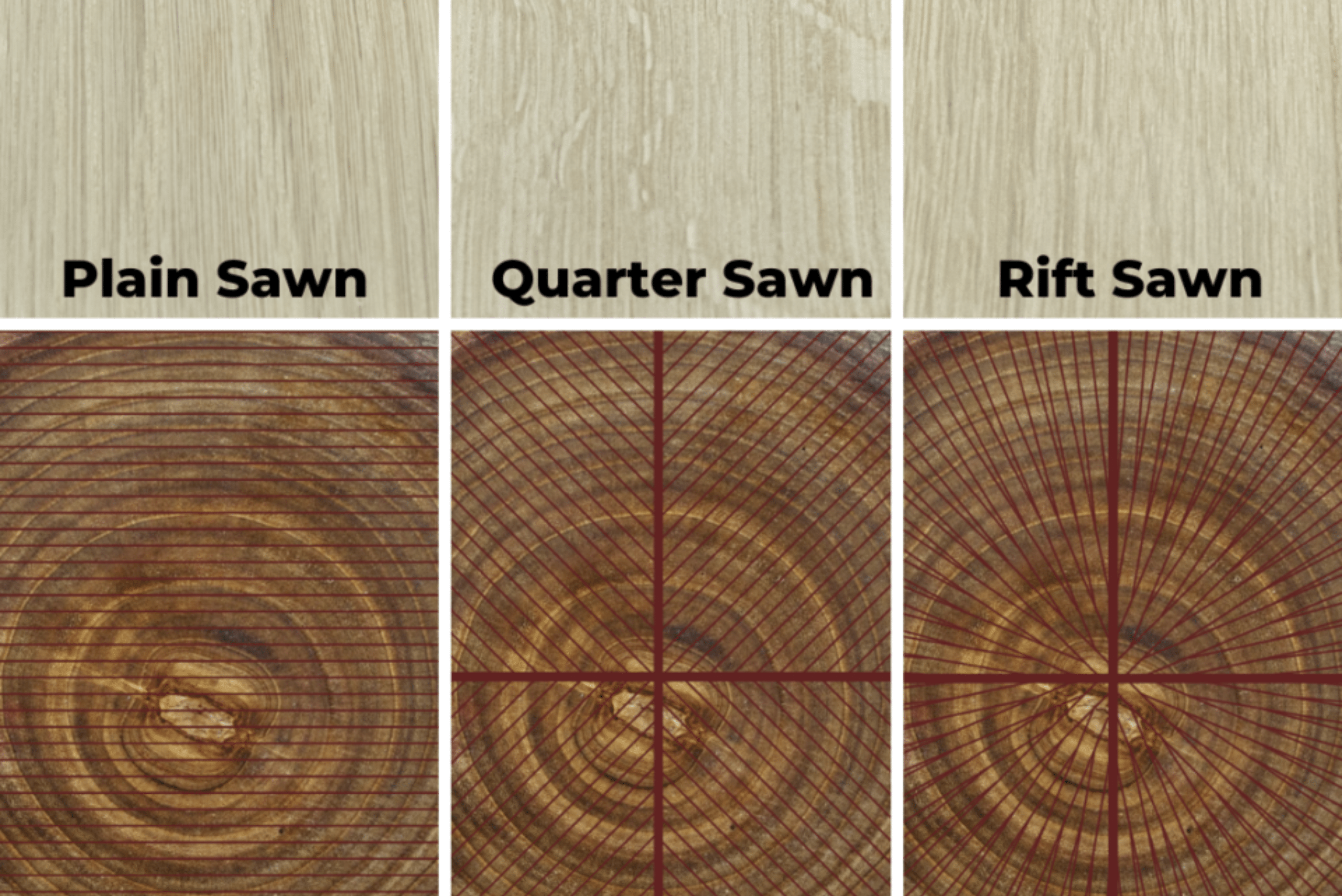
On the other hand, quarter-sawn and rift-sawn woods, due to their more complex milling processes and lower yield, tend to be pricier. However, the investment might be worth it for projects requiring the highest stability and specific aesthetic needs. Deciding on the right type of wood depends on balancing your project’s budget, aesthetic desires, and functional requirements.
Understanding Wood Movement and Care
No matter which type of sawn wood you choose, understanding and anticipating wood movement is crucial. Wood expands and contracts with changes in humidity, and different cuts will react differently. For instance, plain-sawn wood can exhibit significant movement across its width, making it less ideal for precision-required elements.
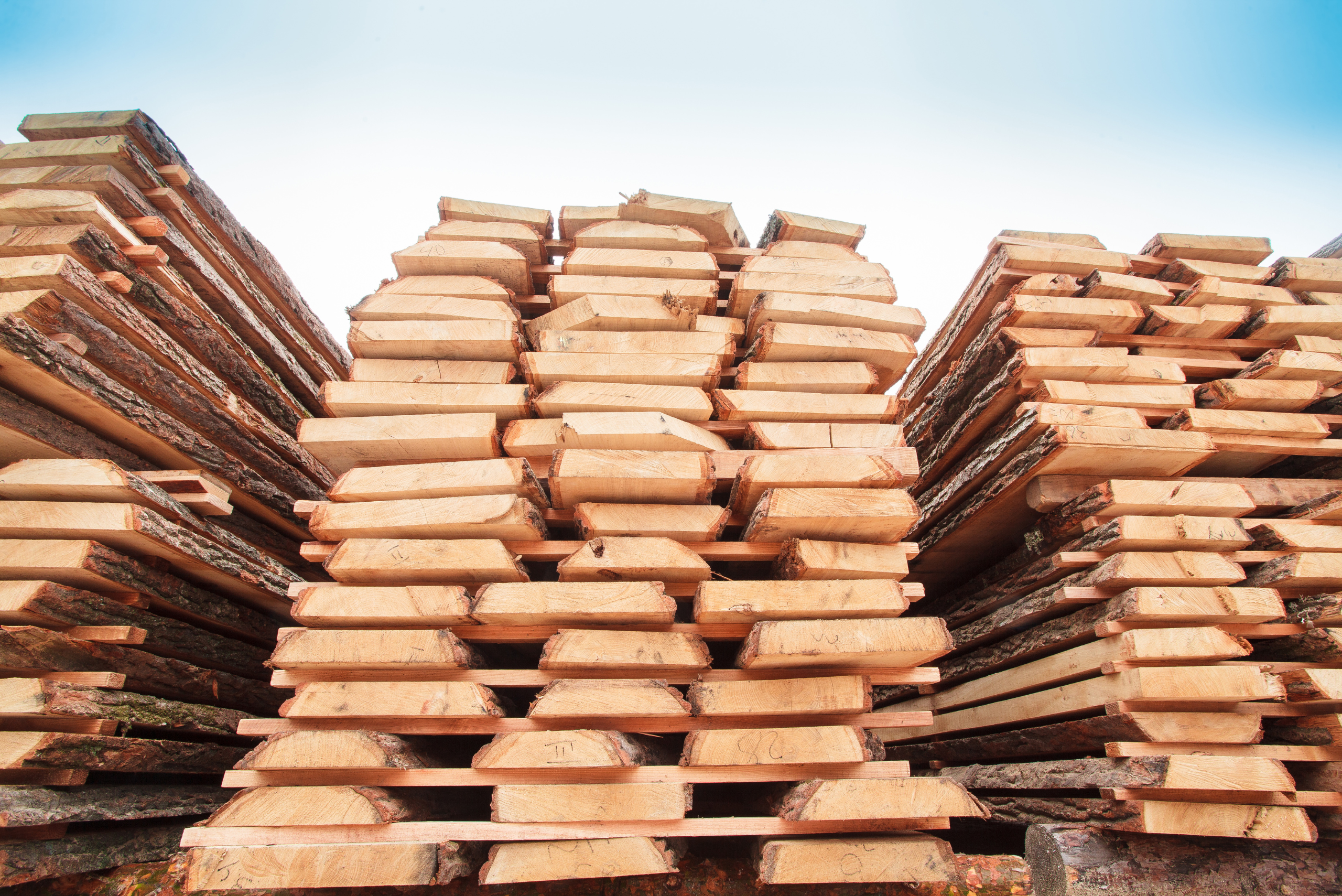
Conversely, quarter-sawn and rift-sawn woods offer greater dimensional stability but at a higher cost. Proper care and maintenance, including acclimatization to your local environment and appropriate finish application, can help mitigate these issues and prolong the life of your woodwork.
FAQs
What is the difference between quarter-sawn, rift-sawn, and plain-sawn lumber?
Plain-sawn lumber, also known as flat-sawn, is the most common and economical sawing method where the log is cut parallel to its growth rings, resulting in a varied grain pattern. Quarter-sawn lumber involves cutting the log into quarters and then sawing perpendicular to the growth rings, yielding a straight grain pattern with distinctive medullary rays, prized for its stability and durability. Rift sawing produces boards with a radial grain pattern, minimizing the appearance of medullary rays and creating a very straight, uniform grain pattern.
What are the 3 main types of sawn timber?
Sawn timber is categorized into three main types: plain sawn (or flat sawn), quarter sawn, and rift sawn. Each type offers distinct grain patterns and characteristics that suit different applications and aesthetic preferences.
Is flat-sawn better than quarter-sawn?
Whether flat-sawn or quarter-sawn lumber is better depends on the specific application. Flat-sawn lumber is more common and less expensive, making it suitable for many general construction purposes. However, quarter-sawn lumber generally offers superior stability, durability, and resistance to warping due to its straight grain pattern. This makes it particularly desirable for high-quality woodworking projects such as fine furniture, cabinetry, and flooring.
What are the disadvantages of rift-sawn wood?
While rift-sawn wood offers advantages such as a straight grain pattern and enhanced stability, it does come with some disadvantages. Rift-sawn lumber tends to be more expensive and less readily available compared to plain-sawn lumber. Additionally, rift sawing can result in more waste during the milling process as it requires cutting at a specific angle to achieve the desired grain pattern. However, for projects where straight grain and stability are paramount, the benefits of rift-sawn wood may outweigh these drawbacks.
What is the key advantage of quarter sawn lumber over plain sawn lumber?
The key advantage of quarter-sawn lumber over plain-sawn lumber is its superior stability and resistance to warping and cupping. Quarter-sawn lumber has a more consistent grain pattern, which makes it less likely to expand or contract with changes in humidity and temperature. This makes it an excellent choice for applications where dimensional stability is crucial, such as fine furniture, flooring, and musical instruments.
What is the most expensive wood cut?
The most expensive wood cut is typically the quarter-sawn cut. This is because quarter sawing is a more labor-intensive and time-consuming process compared to plain sawing. The yield of usable lumber is also lower with quarter sawing, which further increases its cost. However, the benefits of improved stability and a unique grain pattern often justify the higher price for many applications.
What is the most stable cut of wood?
The most stable cut of wood is the quarter-sawn cut. Due to the way it is cut, with growth rings at near right angles to the board’s surface, quarter-sawn wood minimizes the effects of environmental changes like humidity and temperature, resulting in less expansion, contraction, and warping. This stability makes it ideal for uses where maintaining precise dimensions and shapes is important.
As we conclude, remember – TedsWoodworking is your ally in woodworking aspirations. Dive into 16,000+ projects with ease. Your creativity knows no bounds. Happy crafting!
Related Articles
- Best Types of Wood for Beginner Woodworking
- Plywood Types and Uses: A Comprehensive Guide
- How to Unwarp Wood – Efficient Restoration Tips
Whether you opt for plain-sawn, quarter-sawn, or rift-sawn wood, each type offers unique benefits and challenges. By understanding these differences and how they can impact your final project, you can make more informed decisions, ensuring beautiful, durable results in all your woodworking endeavors. Remember, the right knowledge not only leads to better projects but also enhances your skills and enjoyment as a craftsman.
Ready to start your next project? Join our DIY community to receive tool tips, how-to guides, and exclusive creative insights. Subscribe to the ManMadeDIY newsletter now! Click here to unlock a world of hands-on inspiration.









